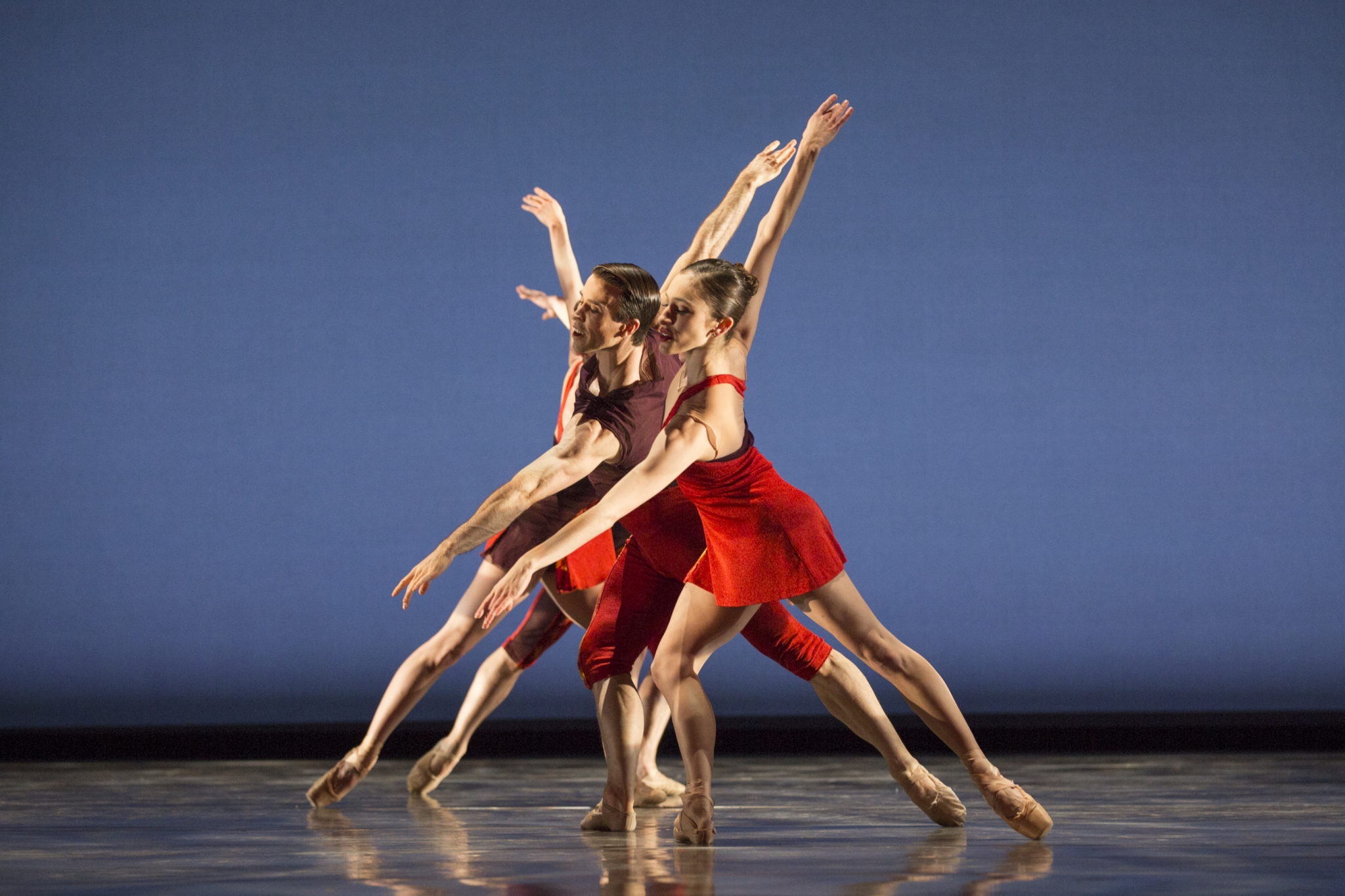Omakase, written with the character for trust, is the word you use when you order chef’s choice at a sushi restaurant. It shows that you trust the skill of the chef to know better than you what is in season and what will taste best together. When you say omakase, instead of giving an order, you are trusting the chef to create the best experience for you, like a DJ controlling the atmosphere of a party by selecting the right beats. You are likely to be served dishes outside of your comfort zone, and while you might not like all of them, a good chef will create a more delicious and memorable meal than you could have selected for yourself.
Each spring, Pacific Northwest Ballet’s Director’s Choice program is ballet omakase. The mixed rep program is Director Peter Boal’s opportunity to express his own taste and to stretch the audience and the dancers with dances that are more challenging or unusual than the regular season fare.
Rush
This year, Director’s Choice opened with Rush, a rich and somber ballet lit and costumed in burgundy and gold. It is set to music by Bohuslav Martinue that was written on the eve of the Nazi takeover of Czechoslovakia and expresses the dark feelings of that time period without specifically evoking historical events. In fact, choreographer Paul Gibson, who is a Ballet Master at PNB, was unaware of the history of the piece and responded to the emotions it evoked when he began work on the ballet.
Despite its somber tones, this ballet is beautiful to watch. Its abstract neo-classical movements are sweeping and graceful, occasionally pierced by moments when the dancers stand rigid with both hands raised, as if in defiance of some unknown, unwelcome future just offstage.
Little mortal jump
The second ballet, which is now one of my favorites, was almost not a ballet at all. Defying conventional expectations, it begins with a dancer running down the aisle of the auditorium and accessing the stage from the front. When his part is done, he walks offstage – into the orchestra pit. The music combines individual pieces from artists as varied as Philip Glass, Andrew Bird, and Tom Waits. The movements are equally unballetic. Dancers move together as if attached by strings or magnetic forces. They touch each other’s heads and faces, roll on the floor and climb on top of each other. Gender roles are reversed as female dancers support men’s weight. Dancers in Velcro suits get stuck to movable walls, shed their skins and dance again. Gibson’s ballet had a story it didn’t tell, but Alejandro Cerrudo’s Little mortal jump tells stories that aren’t there. Dancers interact in cinematic vignettes that, like a studio preview reel, capture your interest but do not answer questions. A woman runs desperately toward a glowing light while a man holds her back – is she trying to rescue her baby from a burning building, or reaching for a pot of leprechaun gold? The answer lies offstage.
Year of the Rabbit
With music by Sufjan Stevens and a thematic concept in the Chinese zodiac but no plot, Justin Peck’s Year of the Rabbit balances the strengths of the previous two pieces. The style of movement was a mixture of the classical ballet steps used in Rush and the strange elasticity of Little mortal jump. Dancers are characters who partake in relationships with each other, sometimes grouping together socially, sometimes pairing off. But just as in the other pieces, the audience doesn’t know what happens. Dancers jump into arms that – maybe – wait offstage. In the end, a dancer stands with arms upraised, a visual echo of the first dance.
Gochisosama deshita.







About the author